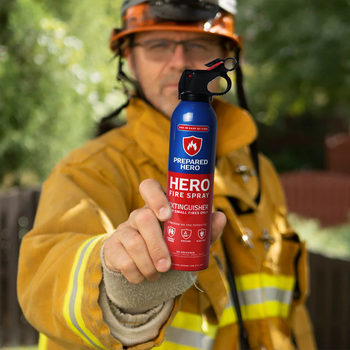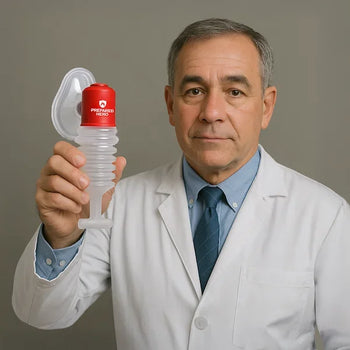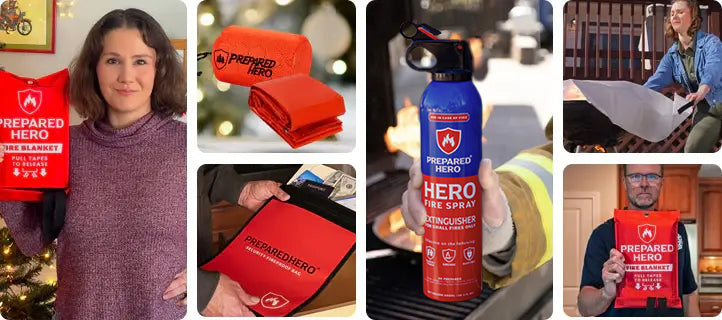Where you put your smoke detectors matters just as much as installing them. Proper placement makes sure they can detect...
Dryers make our lives easier, but they catch lint. That soft, dusty stuff might seem harmless, but letting it build up can cause problems. From fire risks to higher energy bills, you shouldn’t ignore lint buildup.
In this guide, we’ll break down everything you need to know about dryer lint, what causes it to build up, and how to clean it out.
What Is Dryer Lint?

Dryer lint is the fluffy buildup you find in your dryer’s lint trap after doing laundry. It’s made up of tiny fibers that break off your clothes during the drying cycle. It also includes dust, hair, skin cells, and pet fur if you have pets at home. This mix forms as clothes tumble and rub against each other, and the heat loosens the fibers. The dryer lint trap is designed to catch this debris before it travels into the dryer vent, where it could block airflow and make your dryer work harder. Aside from the lint trap, you should clean the dryer vent as well.
While dryer lint might seem harmless, it’s actually flammable because the fine fibers have a large surface area. Excessive lint buildup is a serious fire risk. Lint can also reduce your dryer’s efficiency, which leads to longer drying times and higher energy use.
Cleaning the lint trap after every load is the easiest way to prevent these problems. For more intensive maintenance, clean out the vent and ductwork regularly. Understanding what dryer lint is and why it forms makes it easier to see why regular cleaning is important for dryer safety and performance.
Why Is My Dryer Creating So Much Lint?
Your dryer is creating so much lint because you’re drying new clothes, your dryer isn’t working properly, or the vent is clogged. But in some cases, producing more lint than usual is normal. It’s not always something to panic about, but it’s worth paying attention to.
After all, lint is just tiny bits of fabric that come off your clothes during drying. The heat and tumbling create friction, and that friction pulls loose fibers off, especially from cotton and other soft fabrics. So, having some lint is totally normal.
That said, there are valid reasons why you might be seeing too much lint. New clothes tend to shed more, especially towels, sweatshirts, and cotton shirts. Over time, older clothes also break down and shed more fibers. Your dryer will also produce more lint if you’ve accidentally tossed in a tissue or napkin with your laundry.
However, it’s not always just about the clothes. Sometimes the problem is the dryer itself. A clogged vent system can trap lint inside instead of pushing it outside. If you notice lint building up behind your dryer, or if your clothes come out with lint stuck to them, your vent needs to be cleaned. Other mechanical issues, like worn drum seals or a damaged lint trap, can also reduce airflow, causing lint to build up in the wrong places.
In short, more lint could be normal shedding, or it could be a sign that something’s wrong. Check your laundry, inspect your dryer, and clean your lint trap and vent regularly to keep things running smoothly. Find out how to properly clean your dryer here.
What Happens if I Don’t Clean Dryer Lint?

Many problems can happen if you don’t clean the dryer lint. Not cleaning out dryer lint might seem harmless, but the issues can build up fast. Lint is highly flammable, so it can overheat and start a fire when it piles up in the trap or vent. In fact, the NFPA (National Fire Protection Association) states that lint buildup is the leading cause of dryer fires.
Lint also blocks airflow, so your clothes will take longer to dry. You end up running extra cycles and wasting time. Plus, that extra work for your dryer leads to higher energy bills over time.
It’s not just about electricity bills. Your dryer can take serious damage, too. Overheating can burn out the heating element or wear down the motor, resulting in costly repairs or a complete replacement. Lint buildup can also lower your indoor air quality because it lets dust and fibers escape into the air. This can trigger allergies or make asthma symptoms worse.
Your clothes take a hit as well. Debris from a clogged trap can damage fabric, so it wears out or stays dirty. Lint can even travel into the vent and ductwork, creating more airflow problems and safety hazards. So, clean your lint trap after every load and don’t skip on dryer maintenance.
What Helps Remove Lint in a Dryer?
Many tools, including a brush and vacuum cleaner, help remove lint in a dryer. You can also use a mixture of water and mild dish soap or liquid detergent.
A vacuum cleaner with a hose attachment can reach tight spots around the lint trap, vent, and inside the dryer where lint hides. Meanwhile, a nylon or vent brush loosens lint stuck to the trap, ducts, or other hard-to-reach areas. You can also use warm water mixed with mild dish soap or liquid detergent for deeper cleaning. It can wash away residue from the lint screen, especially buildup from fabric softeners or dryer sheets.
Using these tools together keeps airflow strong, shortens drying times, and helps prevent overheating. Regular cleaning with the right tools protects your dryer and makes your laundry routine safer and more efficient.
How Often Should I Clean Lint Out of the Dryer?
You should clean your dryer’s lint trap after every single load. It only takes a few seconds and helps your dryer work better while reducing the risk of fire. If you skip it, lint can build up fast and cause problems like longer drying times or even overheating.
In addition, you should deep-clean your lint trap every six months. Use liquid detergent, water, and a nylon brush to scrub away any leftover residue. Don’t forget to clean the slot where the trap goes because lint can hide down there, too.
Clean out the dryer vent and ducts at least once a year. If your clothes are taking longer to dry or feel extra hot, you might need to clean them more often. Remember, routine maintenance keeps your dryer safe and efficient.
What Causes Excessive Dryer Lint?

Excessive dryer lint isn’t just messy. It can cause many issues that can be prevented. Here are the main causes of excessive dryer lint and how to keep them under control:
1. Clogged Lint Trap
If the lint trap isn’t cleaned after each load, it can block airflow and cause lint to slip past into the vent system. This creates more lint mess, slow drying times, and waste energy.
2. Clogged Dryer Vent
Lint can collect inside the dryer vent, especially if it’s long, bent, or poorly installed. A blocked vent forces lint out through other openings and increases the risk of overheating or fire.
3. Overloading
Stuffing too many clothes in the drum limits airflow. This can push lint into places it shouldn’t be and make the problem worse.
4. Fabric Softener Residue
Liquid softeners and some dryer sheets can coat the lint screen and vent with residue. This traps more lint and causes blockages.
5. Fabric Type and Wear
Towels, corduroy, and fleece naturally shed more lint. Worn-out felt seals, loose ducts, or crushed hoses can also let lint escape.
How Do I Know if My Dryer Is Clogged With Lint?

You can know if your dryer is clogged with lint by watching out for drying times, how hot your dryer and clothes are, burning smells, reduced airflow, extra humidity, and the amount of lint in the trap.
If your clothes take more than one cycle to dry or feel hotter than normal, dryer airflow might be blocked. A burning or musty smell while the dryer runs is also a big warning sign because lint can overheat and even smolder. You might also notice the dryer itself getting unusually hot, or that there’s little to no lint in the trap because it’s stuck further down in the vent. Check for visible lint around the outside vent or on your clothes after drying as well.
Reduced airflow is another red flag. You can confirm this by holding a piece of paper near the lint trap opening on an air-only setting. You may have a clog if there’s no suction. Even extra humidity in the laundry room can be a sign it’s time for a deep clean.
How Do I Stop Lint Buildup in My Dryer Vent?
You can stop lint buildup in your dryer vent by cleaning the lint trap after every load. Doing this prevents lint from traveling into the vent in the first place. Plus, thoroughly clean your vent at least once a year, or more often if your dryer isn’t working as well as it used to.
Make sure your vent uses smooth metal ducting instead of plastic or flexible foil, because lint sticks less to smooth surfaces. Check the exterior vent regularly to be sure it’s not blocked by lint, dirt, or pests. If you see heavy buildup or if airflow is weak, call a professional for a deep clean.
Be careful of the fabrics you dry as well. Towels and fleece shed more lint, so you might need to clean more thoroughly. A few habits can keep your dryer vent clear, efficient, and safe.
Can Dryer Sheets Cause Lint Buildup?

Dryer sheets don’t create lint, but they can lead to lint buildup if you’re not careful. They work by coating clothes with a softening agent that reduces static cling. The problem is that this coating can leave a waxy residue on your lint filter and inside the dryer. If the filter isn’t cleaned regularly, that residue can clog the mesh, trap more lint, and stop it from being collected properly.
When airflow is restricted, your dryer has to work harder. This leads to longer drying times, higher energy use, and a higher risk of overheating. In some cases, overheating can become a fire hazard.
To avoid these issues, clean the lint filter after every load and occasionally wash it with soap and water to remove any buildup. This helps keep your dryer running efficiently and reduces safety risks.
How Does Dryer Lint Affect Indoor Air Quality?
Dryer lint can hurt indoor air quality in many ways. For one, a clogged vent traps moisture, which can lead to mold and mildew growth. This releases spores that irritate allergies and asthma.
Lint and dust particles can also escape into the air and cause breathing problems, especially for those with respiratory issues. If you have a gas dryer, a blocked vent can push dangerous carbon monoxide into your home, which is a serious safety risk. Poor airflow from a clogged vent also traps stale air and airborne contaminants indoors.
Over time, this can make the air in your home feel stuffy and unhealthy. Regularly cleaning your lint trap and dryer vent helps keep the air fresh, reduces health risks, and keeps your dryer running safely.
Can a Dryer Lint Catch Fire?
Yes, dryer lint can catch fire. It’s made of tiny fabric fibers, which are highly flammable. Lint can restrict airflow if it builds up in the lint trap, vent, or inside the dryer. This makes the dryer overheat, and the trapped lint can ignite from the heat. Once a fire starts, it can quickly spread beyond the dryer and into your home. That’s why cleaning the lint trap after every load and keeping the vent clear is so important.
It’s also smart to keep a fire safety kit nearby. A fire blanket can smother small flames before they grow. Meanwhile, a fire spray is easy to use and helps put out dryer-related fires fast. Plus, a flame shield doubles as a fire blanket and also protects you from heat as you escape. These tools give you extra peace of mind and can make all the difference in an emergency.
How Do I Clean My Dryer Vent?

Cleaning your dryer vent keeps your dryer working safely and efficiently. Here’s how to do it properly:
1. Unplug It
Unplug your dryer before starting. Alternatively, turn off the gas valve if it’s a gas model. Then, pull the dryer away from the wall so you have enough space to work safely.
2. Disconnect the Vent
Detach the vent duct from the back of the dryer. You may need to loosen clamps or cut zip ties. Make sure the duct is fully disconnected before continuing.
3. Vacuum Out the Lint
Grab a vacuum with a hose attachment and remove as much lint as you can from inside the duct. Doing this helps clear the path for deep cleaning.
4. Brush the Duct
Use a dryer vent cleaning kit with flexible rods and a rotating brush. Insert the brush into the duct and rotate it to break up lint and debris. Then, move it back and forth to loosen everything.
5. Clean Around the Area
Vacuum any lint or dust around the dryer. If you see residue, wipe it with a damp cloth and mild dish soap. Then, reconnect the duct to the dryer and the wall vent.
6. Check the Outside Vent
Go outside, remove the vent cover, and clear out any lint. Lastly, put the cover back securely once it’s clean.
Can I Run My Dryer Without the Lint Catcher?

You shouldn’t run your dryer without the lint catcher. Running your dryer without it might seem harmless, but it’s actually a big safety risk. The lint catcher’s main job is to trap loose fibers that come off your clothes during drying. Without it, that lint has nowhere to go but into the dryer’s internal parts and vent system, and that’s where problems start.
Plus, lint is highly flammable. If it builds up inside the dryer or in the vent, it can overheat and possibly catch fire. Even if a fire doesn’t break out, too much lint can block airflow, making your dryer overheat or run longer than it should. That puts extra stress on the machine and can damage key parts like the motor or blower wheel.
There’s also the risk of small items, like socks or dryer sheets, getting pulled into areas they don’t belong. This can lead to mechanical issues or full-on breakdowns. In short, skipping the lint catcher isn’t worth the risk. Always keep it in place and clean it regularly.
Should I Save Dryer Lint?
It’s best not to save dryer lint, even though some people suggest using it for crafts, mulch, or fire starters. Dryer lint can easily ignite and start a fire that quickly spreads. It can also contain residue from detergents, fabric softeners, and other laundry products, which may be harmful if inhaled or touched. While repurposing sounds creative, it’s generally not safe or practical for everyday use.
The safest option is to clean the lint trap after every load and have your dryer vent professionally cleaned at least once a year. This removes the flammable material, helps your dryer run more efficiently, and reduces dust and allergens in your home. When you remove lint, throw it away in a sealed bag or container and keep it far from heat sources. Proper disposal keeps your home safer and your dryer working.
Will a Dryer Ball Remove Lint?

Dryer balls can help reduce lint in your laundry, though that’s not really their main job. They’re better known for cutting down drying time, reducing static cling, and softening clothes without chemicals. But when it comes to lint, they do a decent job.
In particular, wool dryer balls work by separating clothes as they tumble. This helps with airflow and cuts down on the friction between fabrics. Less friction means fewer fibers get rubbed off your clothes, which can lead to less lint being created in the first place.
They also help collect loose lint and pet hair while tumbling around in the dryer. So instead of lint sticking to your clothes, some of it ends up stuck to the dryer balls instead. It’s not perfect, but it definitely helps, especially if you deal with a lot of pet hair.
Another bonus: dryer balls don’t leave behind any residue like dryer sheets can. That’s good news because residue from dryer sheets may actually attract more lint to your clothes.
So while dryer balls won’t eliminate lint completely, they’re a solid option if you’re looking to reduce it a bit, cut down on static, and go with a more natural laundry solution.
How Do You Avoid Lint in the Dryer?
Avoid lint in the dryer by cleaning the lint trap after every load. It’s quick and makes a big difference. You can also use a low-heat setting when drying to reduce wear and fiber shedding.
Sorting your laundry by fabric type and color also helps lighter items shed less and don’t pick up as much lint from heavier fabrics. Turn clothes inside out before drying to protect the outside layer.
Avoid stuffing the dryer full, too. Overloading makes clothes rub more, which means more lint. You can also use dryer sheets or wool dryer balls to help reduce static and catch loose fibers.
Why Is My Dryer Suddenly Not Drying?

Your dryer is suddenly not drying because of blocked airflow, heating element issues, power or gas supply problems, overloading, or mechanical faults like a broken belt or blower wheel.
A clogged lint filter or blocked vent can trap heat and moisture, which slows down the drying process. A kinked or damaged vent hose can also cause the same issue. Plus, overloading the dryer keeps clothes from drying evenly.
Heating problems are another reason. A faulty heating element, blown thermal fuse, or broken thermostat can stop the dryer from reaching the right temperature. Check the power connection and breaker if you have an electric dryer. If you have a gas dryer, make sure the gas supply is on.
Mechanical issues can also be to blame. A broken drive belt, worn blower wheel, or control panel problem can all prevent proper drying. Start by cleaning the lint screen and checking the vent. If that doesn’t work, it might be time to call a professional.
Is It Normal to Have Lint Behind the Dryer?
Yes, it’s normal to have lint behind the dryer. It happens because some lint escapes the lint trap, especially when you’re drying things like new towels or blankets that shed a lot. A few scattered bits don’t mean anything’s wrong.
However, finding clumps or a handful of lint is not normal. This usually means there’s something wrong with your dryer vent. When lint builds up too fast or keeps showing up right after you clean, the vent is likely clogged or poorly installed.
This isn’t just about mess, either. A large amount of lint behind the dryer is a fire hazard. It can also cause your dryer to overheat or work less efficiently, which leads to longer drying times and higher energy bills.
Clogs can happen for different reasons, like blocked vents, improper materials, or even animals nesting in the vent line. If you’re seeing a lot of lint piling up back there, it’s best to get the vent checked and cleaned by a professional.
A little lint is okay. On the other hand, a lot of lint means you have to do something. Remember, regular maintenance keeps your dryer safe and running smoothly.
How Long Does a Dryer Last?

Most dryers last around 10 to 13 years, but that depends on how well you take care of them. If you clean the lint trap regularly, avoid overloading, and do routine maintenance, your dryer can last longer. On the other hand, skipping maintenance can wear it out faster than expected.
How Does Lint Get Past the Lint Trap?
Even though your dryer has a lint trap, it’s totally normal for some lint to get past it. The lint screen catches most of the loose fibers, but not all. Here’s how lint can still sneak through and end up in your dryer’s venting system.
Sometimes the lint screen itself is the problem. If it’s torn, cracked, or not sealed properly, lint can slip around it and get into areas it shouldn’t. Over time, even a small gap can let a lot of lint pass through.
A clogged or blocked vent can also mess with airflow. When the air can’t move freely, it pushes lint into other parts of the dryer instead of through the vent. That can cause lint to build up where you can’t see it.
Even with a working lint trap, the way air moves inside the dryer means some fine lint particles will always bypass the screen. That’s why regular cleaning is so important.
To stay on top of it, clean the lint trap after every load. Check it now and then for damage, and replace it if needed. You should also clean out the exhaust and dryer vent hose at least once a year. Make sure the vent isn't crushed or blocked, and always check the outside vent opening to keep airflow strong and lint buildup low.
Safety Precautions During Cleaning

Safety comes first when cleaning your dryer or doing any maintenance. Always unplug the dryer before you start. That way, you avoid any electrical accidents. Keep kids and pets away while you work, especially since there might be sharp parts exposed during a deep clean.
Skip any flammable cleaners, like gasoline-based sprays or aerosol products. These can catch fire easily, especially in an appliance that gets hot.
If something feels off or you're unsure about what you're doing, it's totally okay to call in a professional. Some tasks are better left to someone trained to handle them.
The goal is to keep your machine in good shape without risking your safety—or anyone else’s. So take your time, be careful, and don’t cut corners when it comes to protecting yourself.
When To Call In The Pros
Dealing with dryer maintenance, especially cleaning the exhaust hose, can be daunting, and that's perfectly understandable. Not everyone is comfortable with DIY tasks, and certain aspects of dryer upkeep, such as thoroughly clearing lint from deep within the vent, can be complex and even hazardous if not done correctly.
If you’re not sure what to do, or if you notice issues like overheating, long drying times, or burning smells, it’s time to call the pros. They have the tools and know-how to fix things safely and quickly.
Finding Reliable Appliance Service Technicians

Finding a good appliance technician doesn’t have to be stressful. Start by asking friends, neighbors, or family if they’ve worked with someone they trust. Word of mouth is often the best way to find dependable help.
You can also check online reviews. Sites like Yelp are full of real feedback from customers who’ve hired repair services before. Pay attention to comments about pricing and customer service, too. Trustworthy companies get a lot of praise for being on time and doing solid work. Take note: research helps prevent headaches later.
Making An Informed Decision: DIY vs. Hiring Professionals
You eventually have to decide whether to handle the job yourself or bring in the pros. The right choice depends on a few key things.
First, think about your experience. If you’re not used to dealing with appliances, it might be safer to call a technician. They know what they’re doing and can spot problems you might miss.
Time matters, too. Cleaning the lint trap and doing routine maintenance can take more time than you expect. If your schedule’s already packed, hiring someone could be the smarter move.
Listen to your dryer as well. Don’t ignore it if it’s making strange noises or giving off odd smells. Those are signs that something’s off, and fixing it yourself might make things worse. That’s when a pro should step in.
Sure, hiring help costs money. But it could save you from an even bigger repair bill down the line. So weigh your skills, time, and budget. Then, make the call that feels right for you. At the end of the day, it’s about your needs.
Conclusion
Dryer lint might seem like no big deal, but it can cause real problems if you ignore it. A little maintenance goes a long way. Clean the lint trap, check the vent, and keep an eye on how your dryer’s running. Whether you handle it yourself or call in a pro, staying on top of it keeps your home safer, your energy bills lower, and your dryer working the way it should.


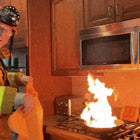 Fire
Fire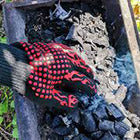 Safety
Safety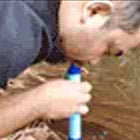 Survival
Survival Protection
Protection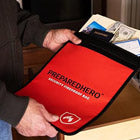 New
New
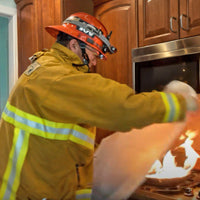 Fire
Fire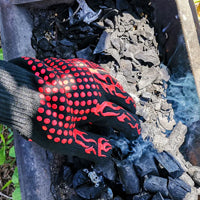 Safety
Safety Survival
Survival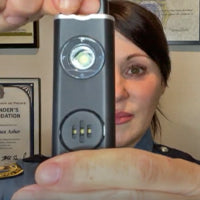 Protection
Protection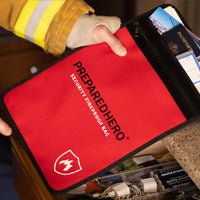 New
New



